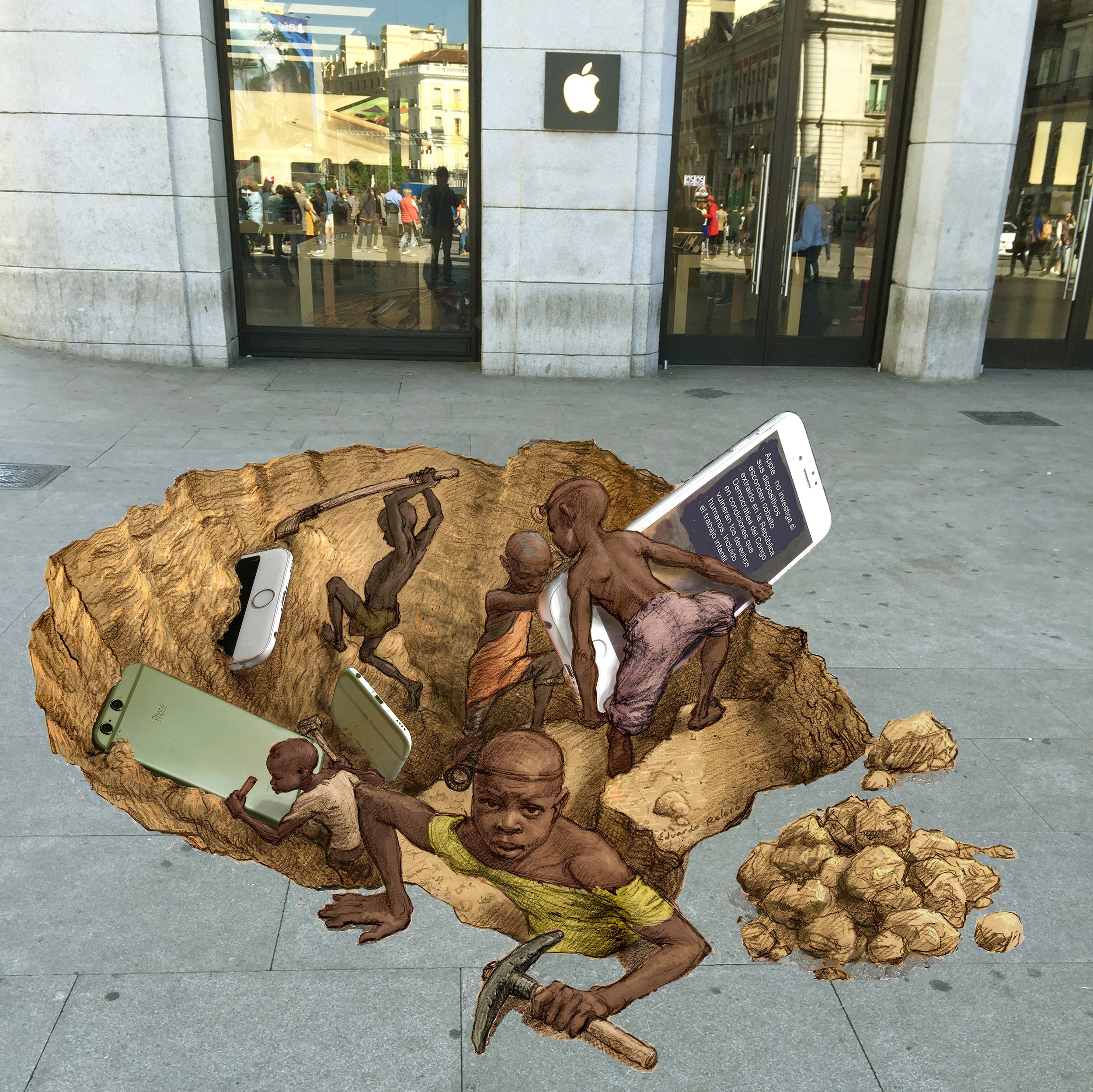Congo, Coltan, and Cell Phones: A People’s History
Lesson by Alison Kysia
More than 5 million people have been killed in Democratic Republic of the Congo since the late 1990s, home to some of the most serious human rights violations since World War II. A look back at Congo’s history sets the stage. From 1885 to 1908, Congo was colonized by the king of Belgium, Leopold II, who took it as his own personal property. Initially, Leopold did not know that Congo was rich in wild rubber, one of the hottest commodities on the global market at the time. At the opening of the 20th century, Congo was the most profitable colony in Africa. It is estimated that Leopold made about 220 million francs, equivalent to $1.1 billion today.
Leopold refused to pay a fair price for labor or resources, and instead enslaved the population through a terror campaign, forcing the Congolese to harvest rubber. The magnitude of the violence is incomprehensible. During Leopold’s rule, 8 million to 10 million people were killed through a variety of colonial policies, making it one of the worst cases of European colonial brutality.
Congo’s colonial history foreshadows the current instability and violence plaguing the country. Since 1997, more than 5 million people have been killed there, making it one of the bloodiest battle zones since World War II. That year marked the end of a 32-year dictatorship (1965–1997) led by Joseph Mobutu, also known as Mobutu Sese Seko, a generously compensated and welcomed friend of six U.S. presidents. He came to power by assisting the U.S. Central Intelligence Agency (CIA) in assassinating the first democratically elected prime minister, Patrice Lumumba, in 1961. They wanted Lumumba dead because of his desire to nationalize natural resources in Congo where the money could be used to create a functioning state.
The mixer activity includes roles for:
Nzinga Mbemba Afonso / Afonso I, king of the Kingdom of Kongo from 1506–1543
Chester A. Arthur, U.S. President
Otto von Bismarck, German Chancellor
Roger Casement, Irishman who served as a British representative
John Dunlop, co-founder of Dunlop Company
James Cardinal Gibbons, Catholic Archbishop of Baltimore
Ilanga, resident of Waniendo Village, Congo
Charles Lemaire, Force Publique officer
King Leopold II of Belgium, Congo colonizer
Patrice Lumumba, first elected prime minister of the Democratic Republic of the Congo
Joseph Mobutu / Mobutu Sese Seko, president of the Democratic Republic of the Congo from 1965–1997
Edmund Dene Morel British citizen, journalist, and pacifist
Chief Mulume Niama, Congolese freedom fighter
Leon Rom, head of the Force Publique
General Henry Shelton Sanford, U.S. diplomat turned lobbyist for Leopold
Mary French Sheldon, British travel writer and publisher
Reverend William Henry Sheppard, African American missionary for the Presbyterian Church
Henry Morton Stanley (John Rowlands), explorer and colonizer
Mark Twain, author and member of the Congo Reform Association
George Washington Williams, African American minister, veteran, and historian
The trial activity includes roles for:
Capitalism
Colonial Administrators
Consumers of Rubber
Force Publique
Ilanga, resident of Waniendo Village, Congo
King Leopold II of Belgium

